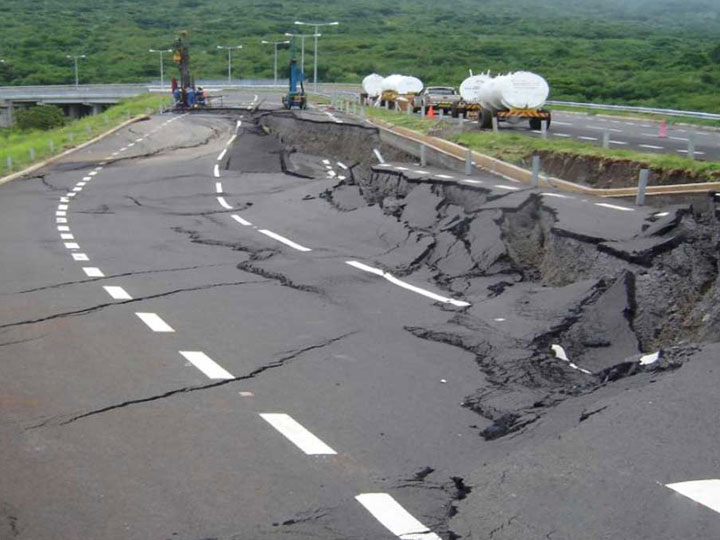The ground is seldom flat. There are natural slopes all around us on the ground, going up and down hills or valleys. Man-made slopes are used mostly in infrastructure construction like in roads and dams. But nothing is permanent and so slopes destabilize and fail as well. Today, we will talk about the causes and types of slope failures in this article.
Natural forces like wind, water, and ice often create slopes on their own accord. And similarly, they also go on to destroy or at least erode the slopes they have created. This effect extends to man-made slopes as well, though they are engineered to be sturdier. Often unstable topography itself results in unstable slopes.
Slopes can fail in ways, depending upon how and when they fail. Sometimes the sloped ground collapses suddenly, causing major accidents and taking lives. Sometimes the sloped ground just settles slowly, over a long time. Sometimes only a smaller and weaker part breaks down, sometimes a whole hillside may come sliding down.
To prevent such mishaps, geologists and geotechnical engineers have to pay attention to many intricate details that determine the strength of the ground in the chosen place. The factors that determine this are geological features of the section of ground, groundwater presence, surface drainage, and most of all, shear strength of the soil - which directly depends upon the type and quality of soil.
Natural forces are always working to make the ground flatter and flatter. Water and wind are the two main culprits eroding off any ground features and artificial structures that come in their path. This can happen quicker and quicker as the forces get stronger.
Erosion is the main reason for most slope failures, and in more extreme cases, landslides. It continuously works to change the geometry of an area to make it as horizontal as possible, and works better on soil than rock. So, natural slopes and artificial slopes with a soil base are the most affected by erosion.
Rain is quite bad for all kinds of exposed soil, for it hits the ground to directly dissolve and wash away soil particles. It saturates the ground and fills up the soil with moisture, weakening it. This is the reason why maintaining a natural slope in a rainy area is maddening, while the rain continuously attempts to wash it away.
While stony areas are somewhat more resistant to this, yet rainwater gets through cracks in rocks, weakening the ground from underneath and taking out the packed support. That's a major cause of most muddy landslides.
When the very earth shakes with fury, few things can stay up, including slopes. Earthquakes introduce dynamic shear forces and many other forces at once on a geographical feature - natural or manmade. Few things can stand up to such a versatile battering.
One major player in this field is the pore water pressure. This causes the ground soil, especially coarse grained soils, to behave like viscous liquid. Whereas this isn't great for the structures on top of them - buildings love a solid ground - but the seismic waves do get softened when they encounter ground like this. Otherwise, earthquakes hit sloped ground quite hard.
The loading of a slope directly determines the stability of the slope. Loads placed at the crest or the top side tend to weaken the ground underneath, gradually or suddenly leading to slope failure. Whereas, loads placed at the bottom of the slope, also called the berm zone, are much better handled by the slope.
When the slope breaks along a specific line along the length of the slope on a weak zone, it is called a translational slide. The broken down part may remain largely intact and slide away some distance. This is found commonly happening with slopes built on coarse grained soil.
When a part or whole slope rotates down along an axis parallel to the slope, that is called a rotational slide. This type of slope failure often happens with slopes built on fine grained homogeneous soils. Sometimes an especially weak-soiled slope can settle its whole width, with the axis at the berm. That is called a base failure.
Remember when we talked about some soil behaving like viscous liquid? When that happens a bit too much, the soil, like a liquid, flows down the slope. It flows down even shallow slopes, and spreads around widely, subtracting from the bulk of the slope. It can happen in both dry and wet soils.
When the slope breaks up in blocks along weak lines due to pressure from adjacent ground, the wedge shaped blocks separate from the main mass of the slope and move. To us, it would look as if the slope was hit by a massive hammer and got shattered. This is called block or wedge slide.
